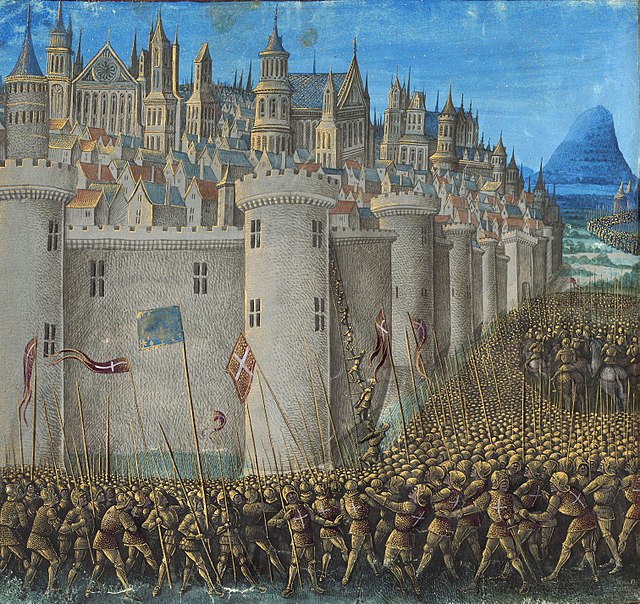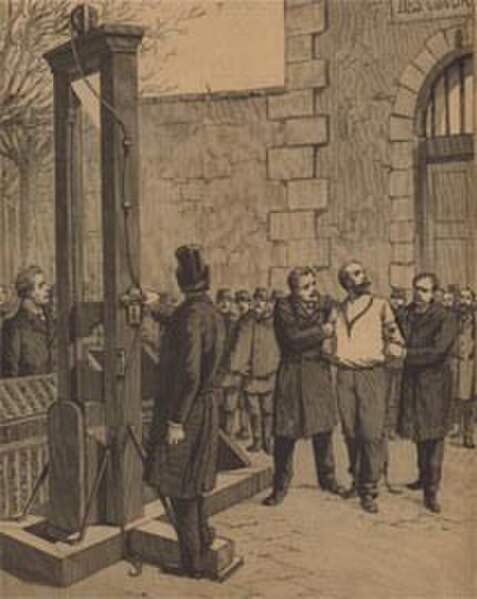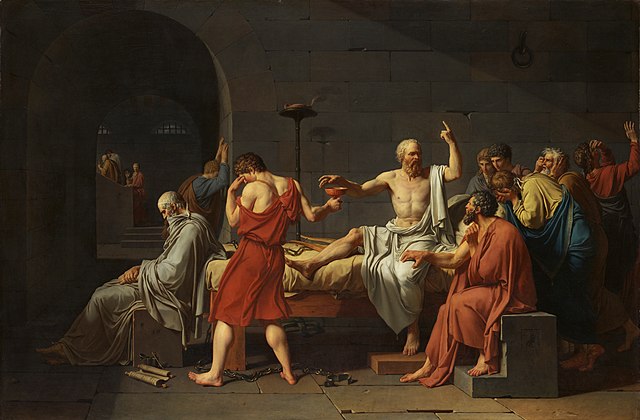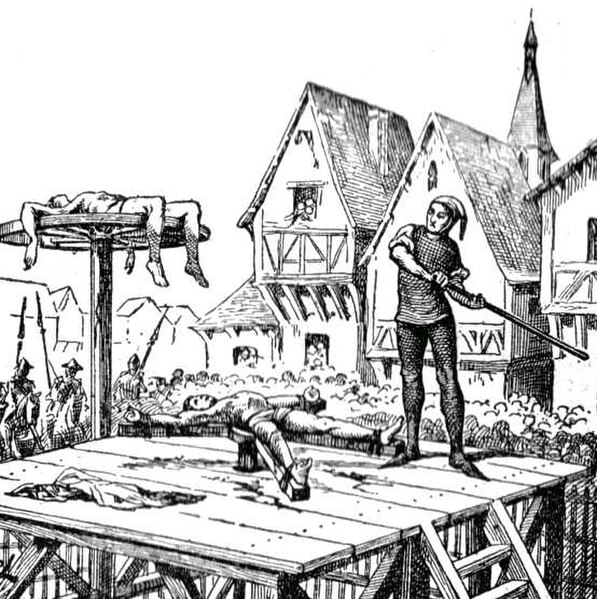Religious violence covers phenomena in which religion is either the subject or the object of violent behavior. All the religions of the world contain narratives, symbols, and metaphors of violence and war. Religious violence is violence that is motivated by, or in reaction to, religious precepts, texts, or the doctrines of a target or an attacker. It includes violence against religious institutions, people, objects, or events. Religious violence does not exclusively include acts which are committed by religious groups, instead, it includes acts which are committed against religious groups.
The Crusades were a series of military campaigns fought mainly between Roman Catholic Europe and Muslims. Depicted here is the Siege of Antioch from the First Crusade.
The St. Bartholomew's Day massacre of French Protestants in 1572
I Believe in the Sword and Almighty God (1914) by Boardman Robinson
Between 1420 and 1431 the Hussite heretics fended off 5 anti-Hussite Crusades ordered by the Pope.
Capital punishment, also known as the death penalty and formerly called judicial homicide, is the state-sanctioned practice of killing a person as a punishment for a crime, usually following an authorised, rule-governed process to conclude that the person is responsible for violating norms that warrant said punishment. The sentence ordering that an offender be punished in such a manner is known as a death sentence, and the act of carrying out the sentence is known as an execution. A prisoner who has been sentenced to death and awaits execution is condemned and is commonly referred to as being "on death row". Etymologically, the term capital refers to execution by beheading, but executions are carried out by many methods, including hanging, shooting, lethal injection, stoning, electrocution, and gassing.
Anarchist Auguste Vaillant about to be guillotined in France in 1894
The Christian Martyrs' Last Prayer, by Jean-Léon Gérôme (1883). Roman Circus Maximus.
The Death of Socrates (1787), in the Metropolitan Museum of Art in New York City
The breaking wheel was used during the Middle Ages and was still in use into the 19th century.








